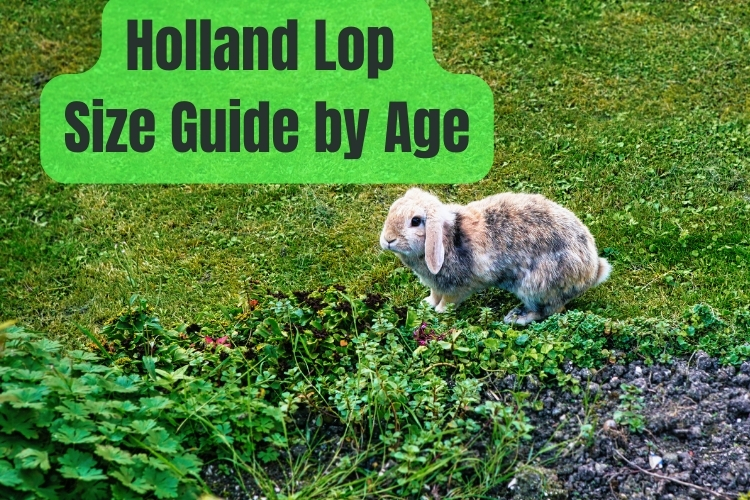The Holland Lop, a charming and popular breed of rabbit, is known for its distinctive floppy ears and compact size. Understanding the growth stages of these delightful creatures is crucial for owners who want to ensure their pets are developing healthily.
In this blog post guide, we will provide you a growth chart by age, detailing the size and weight milestones from birth to maturity, along with factors that influence growth and tips for proper care.
Key Takeaways
- Holland Lops reach their full size between 3 to 4.5 pounds, with females generally larger than males.
- Growth stages include the first weeks after birth, juvenile phase with growth spurts, and reaching maturity around 1 year of age.
- Genetics, diet, and health care are significant factors influencing the growth and development of Holland Lops.
- Proper housing, exercise, and socialization are essential for the optimal growth and well-being of these rabbits.
- Understanding the signs of underweight or overweight rabbits can help owners maintain their Holland Lop’s health.
Understanding Holland Lop Growth Stages
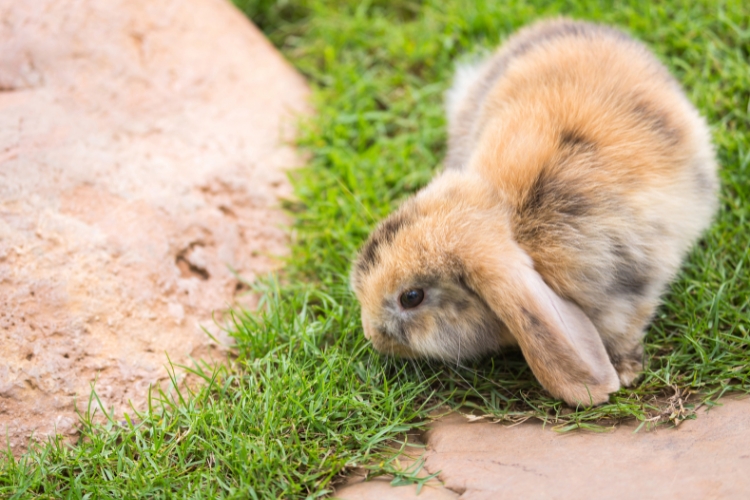
Birth to Weaning: The First Weeks
The initial weeks of a Holland Lop’s life are critical for their development. During this time, baby rabbits experience rapid growth, which sets the foundation for their overall health and size. Weaning typically begins around the 6-8 week mark, transitioning them from mother’s milk to solid food.
Weaning is a gradual process that should be carefully monitored to ensure the kits are adapting well to the dietary change. It’s important to introduce new foods slowly and observe for any signs of digestive distress.
The first weeks are not only about physical growth but also about the beginnings of social interactions with littermates and humans.
Here’s a simple growth chart for Holland Lop bunnies from birth to weaning:
| Age (Weeks) | Expected Weight Range |
|---|---|
| 1 | 75-150g |
| 2 | 150-250g |
| 3 | 250-350g |
| 4 | 350-450g |
| 5 | 450-550g |
| 6 | 550-650g |
| 7 | 650-750g |
| 8 | 750-850g |
Keep in mind that these figures can vary based on individual genetics and health conditions. Regular check-ups with a veterinarian can help track your bunny’s growth accurately.
Juvenile Phase: Growth Spurts and Development
During the juvenile phase, Holland Lops experience significant growth and development. This period is marked by rapid physical changes as well as behavioral maturation. Owners should pay close attention to their rabbit’s diet and environment to ensure they are supporting their pet’s growth needs.
Growth spurts can be unpredictable, but they generally occur between the ages of 2 to 5 months. During this time, it’s not uncommon for a Holland Lop to double in size. Monitoring your rabbit’s weight and size is crucial, as it can inform adjustments to their care regimen.
Consistent handling and interaction during the juvenile phase can help in developing a well-adjusted and sociable Holland Lop.
Factors such as genetics, diet, and overall health play a significant role in how quickly and large a Holland Lop will grow. Below is a simplified growth chart for reference:
| Age (Months) | Estimated Weight (lbs) |
|---|---|
| 2 | 1.0 – 1.5 |
| 3 | 1.5 – 2.0 |
| 4 | 2.0 – 2.5 |
| 5 | 2.5 – 3.0 |
Remember, these figures are estimates and individual rabbits may grow at different rates. Consult with a veterinarian if you have concerns about your Holland Lop’s growth or development.
Reaching Maturity: When Do Holland Lops Stop Growing?
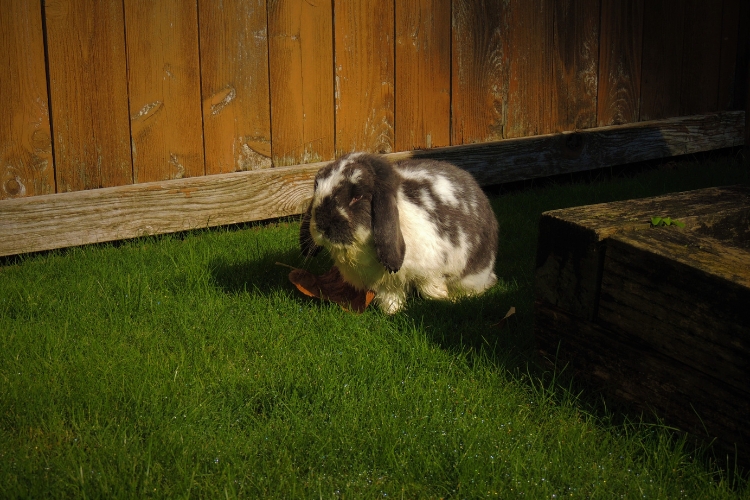
Holland Lops reach their full size and weight by the age of 1 year, although some may continue to fill out and gain a little weight until they are 18 months old. The key indicator of maturity is a leveling off in growth rate, which can be observed through both physical size and weight.
Genetics play a significant role in determining the final size of a Holland Lop, but environmental factors such as diet and exercise also contribute to their overall development. It’s important to monitor their growth against standard benchmarks to ensure they are on the right track.
Holland Lops are considered mature when they no longer show significant changes in size or weight. This is typically by 1 year of age, but some may take a little longer to reach their full potential.
Here is a simplified growth chart for reference:
| Age (Months) | Expected Weight (lbs) |
|---|---|
| 0-1 | 0.5 – 1 |
| 1-3 | 1 – 2 |
| 3-6 | 2 – 3 |
| 6-12 | 3 – 4 |
Remember, these figures are averages and individual rabbits may vary. Regular check-ups with a veterinarian can help ensure your Holland Lop is healthy and growing as expected.
Holland Lop Size and Weight Chart by Age
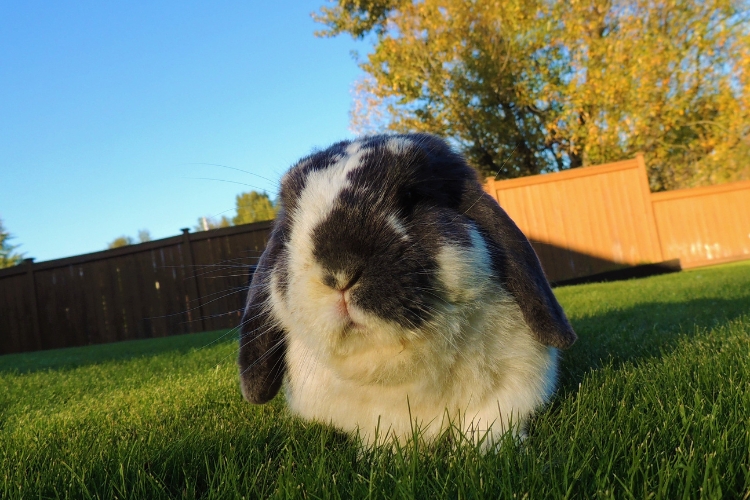
Newborn to 4 Weeks: Early Size Indicators
In the initial month of life, Holland Lop rabbits exhibit significant growth changes. Newborn Holland Lops are tiny, typically weighing between 2 to 4 ounces at birth.
By the end of the fourth week, they may reach up to 1 pound. Monitoring their weight and size during this period is crucial for ensuring they are on track for healthy development.
Weight is a primary indicator of a Holland Lop’s health and growth progress. Below is a simplified growth chart for the first four weeks:
| Age (Weeks) | Average Weight (oz) |
|---|---|
| 0 (Birth) | 2 – 4 |
| 1 | 4 – 6 |
| 2 | 6 – 8 |
| 3 | 8 – 12 |
| 4 | 12 – 16 |
It’s important to note that these figures are averages and individual rabbits may grow at different rates. Consistent weight gain is more critical than meeting exact numbers.
During this stage, the kits will transition from a diet of solely mother’s milk to introducing solid foods. This dietary change can also affect their growth rate and overall health.
1 to 6 Months: Tracking Steady Growth
During the 1 to 6 month age range, Holland Lop rabbits experience a period of steady growth. It’s essential to monitor their development closely to ensure they are on track. Weight gain should be consistent, reflecting a healthy diet and proper care. At this stage, the weaning process is complete, and their diet shifts primarily to hay, fresh vegetables, and a controlled amount of pellets.
| Age (Months) | Average Weight (lbs) |
|---|---|
| 1 | 0.75 – 1.25 |
| 2 | 1.5 – 2.0 |
| 3 | 2.0 – 2.5 |
| 4 | 2.5 – 3.0 |
| 5 | 3.0 – 3.5 |
| 6 | 3.5 – 4.0 |
It’s crucial to provide a balanced diet and ample space for exercise to support their growth. Avoid overfeeding, as it can lead to obesity and health issues later in life.
Regular check-ups with a veterinarian can help identify any potential health concerns early on. Growth can be influenced by various factors, including genetics and environment, so it’s important to consider these when assessing your Holland Lop’s development.
6 Months to 1 Year: Approaching Full Size
As Holland Lops approach their first year, they are nearing their full adult size. By six months, most will have reached about 75% of their adult weight. It’s important to monitor their growth during this period, as it can be indicative of their overall health and well-being.
Weight and size can vary slightly based on genetics and diet, but a healthy Holland Lop should weigh between 2 to 4 pounds. Here’s a simple growth chart for reference:
| Age (Months) | Expected Weight (lbs) |
|---|---|
| 6 | 2 – 2.5 |
| 7 | 2.5 – 3 |
| 8 | 3 – 3.5 |
| 9 | 3.5 – 4 |
| 10 | 3.75 – 4 |
| 11 | 3.75 – 4 |
| 12 | 4 |
Consistent growth within these ranges is a good sign, but any significant deviations should be discussed with a veterinarian.
Remember, the lifespan of a rabbit can be influenced by many factors, including genetics and care. On average, rabbits live between 8 and 10 years, so ensuring a healthy development early on is crucial for a long and happy life.
Factors Influencing Holland Lop Growth
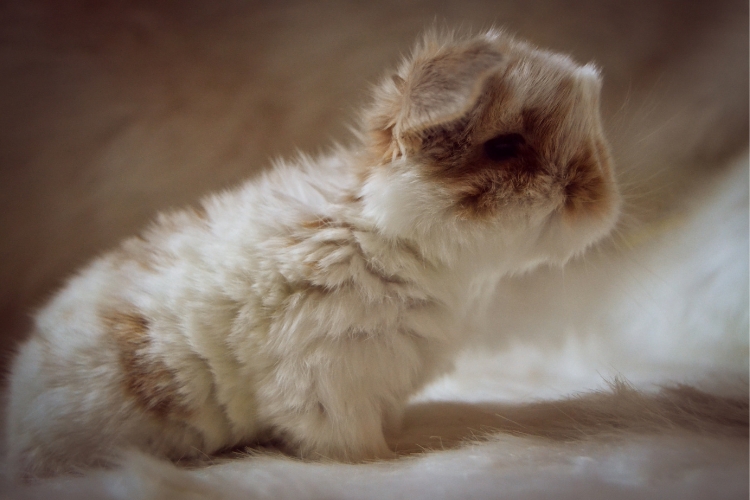
Genetics and Hereditary Traits
The genetic makeup of Holland Lops plays a pivotal role in their growth and development. Rabbits, including Holland Lops, inherit traits from their parents, which can significantly influence their size and weight as they mature.
Hereditary factors can determine not only the potential for size but also the overall health and vitality of these small mammals. Genetics are not the sole determinants of a Holland Lop’s growth, however.
It’s important to recognize that while genetics set the stage, environmental factors and care also contribute to the rabbit’s development. For instance, a Holland Lop with the genetic potential for larger size may not reach that potential if not provided with adequate nutrition and care.
- Genetic predisposition for size
- Potential for certain health conditions
- Inherited coat colors and patterns
While we cannot change the genetic heritage of our Holland Lops, understanding their background can help us better cater to their individual needs and ensure they grow to their full potential.
Diet and Nutrition: Building Blocks of Growth
The diet of a Holland Lop is pivotal to its growth and overall health. Fresh hay should be the mainstay of their diet, providing the essential long fibrous grasses that aid in digestive health. Alongside hay, a balance of quality pellets, fresh water, and a variety of greens will ensure your Holland Lop receives a well-rounded diet.
Proper nutrition is not just about the right ingredients but also about the right quantities. Overfeeding can lead to obesity, while underfeeding can result in malnutrition. Here’s a simple guide to what your Holland Lop should be eating at different stages of its life:
- Newborn to 3 weeks: Mother’s milk
- 3 to 7 weeks: Introduce hay and pellets
- 7 weeks to 7 months: Unlimited hay, measured pellets, and introduce greens
- 7 months and older: Established diet with controlled pellet intake
It’s essential to monitor your Holland Lop’s diet closely and adjust as necessary to support healthy growth. Remember, a balanced diet is the cornerstone of a healthy rabbit.
Health and Veterinary Care: Impact on Development
The health and well-being of Holland Lops are pivotal to their growth and development. Regular veterinary care ensures that any potential health issues are identified and treated promptly, which can significantly influence a rabbit’s growth trajectory.
Proper medical attention and preventive care are essential for maintaining the overall health of your Holland Lop.
Vaccinations, parasite control, and routine health checks are part of a comprehensive health care plan. It’s important to note that the administration of meloxicam before rather than after procedures such as castration does not have a relevant effect on eating, defecating, or pain score.
This highlights the importance of pain management and careful monitoring post-surgery to ensure a quick recovery.
Ensuring your Holland Lop receives appropriate veterinary care throughout its life is not just about preventing illness; it’s about providing a foundation for healthy growth and a high quality of life.
Caring for Your Growing Holland Lop
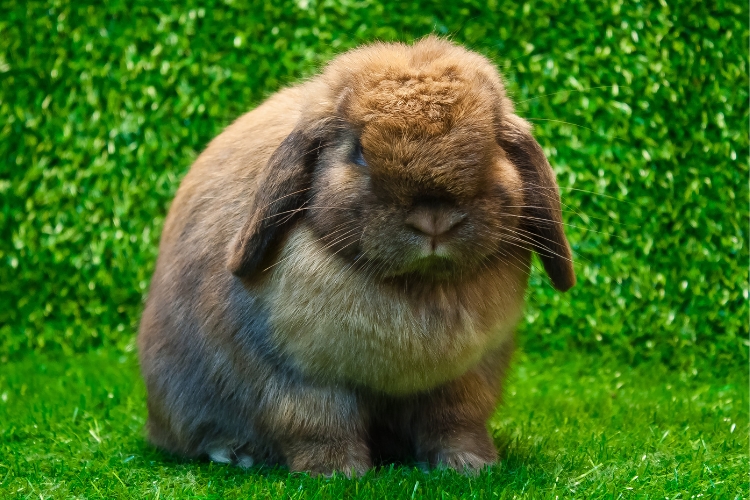
Housing Requirements for Optimal Growth
Providing the right environment for your Holland Lop is crucial for its growth and well-being. Adequate housing not only ensures comfort but also promotes healthy development. The cage or enclosure should be spacious enough to allow for movement and exercise, as well as areas for rest and feeding.
Space is a key factor in housing. Here’s a simple guide to the minimum space requirements based on your rabbit’s age:
- Newborn to 4 Weeks: A nest box within the mother’s cage, measuring at least 12″x12″.
- 1 to 6 Months: As they grow, a cage size of 24″x36″ is recommended.
- 6 Months and Older: A full-sized adult Holland Lop will need a cage that is at least 30″x36″ to comfortably move, play, and rest.
It’s important to remember that larger is always better when it comes to the living space of your Holland Lop. They should have room to hop, stretch, and explore safely within their habitat.
Regular cleaning and maintenance of the housing area are essential to prevent diseases and ensure a hygienic environment. Include a variety of toys and accessories to stimulate your Holland Lop’s mind and encourage physical activity.
Exercise and Play: Essential for Physical Development
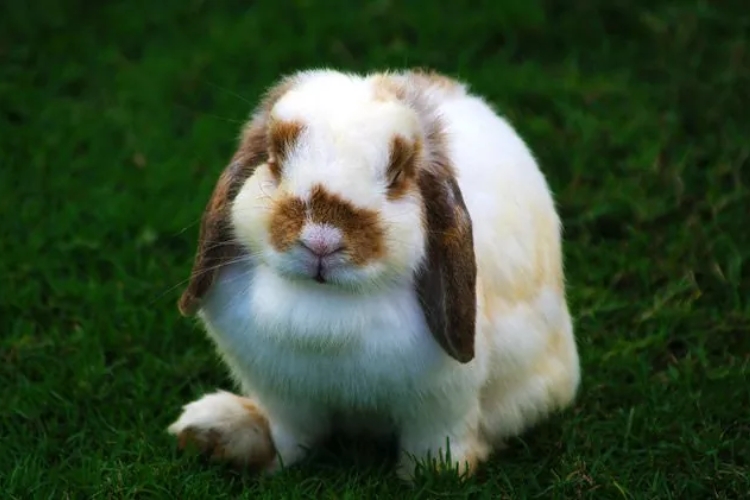
Regular exercise and play are crucial for the physical development of Holland Lops. Engaging in daily activities helps to build muscle tone, improve cardiovascular health, and maintain a healthy weight. It’s not just about physical health; these activities also stimulate their minds and contribute to their overall well-being.
Exercise routines should be tailored to each rabbit’s individual needs and can include a variety of activities:
- Hopping and running in a safe, enclosed space
- Exploring new environments under supervision
- Playing with rabbit-safe toys to encourage movement
Consistency in exercise and play is key to ensuring your Holland Lop develops properly. It’s important to establish a routine that includes daily physical activity.
Remember, a lack of exercise can lead to obesity and other health issues. Therefore, monitoring your Holland Lop’s activity levels and adjusting them as necessary is essential for their growth and health.
Socialization and Handling: Emotional Growth Considerations
Socialization plays a pivotal role in the emotional development of Holland Lops. Proper socialization ensures a well-adjusted rabbit that can interact positively with humans and other rabbits. It’s not just about handling; it’s about fostering a sense of security and belonging in your pet.
- Developing proficiency in relating socially is crucial for Holland Lops, as it aids in their overall well-being. A rabbit that is comfortable with social interactions is more likely to exhibit a calm demeanor and be less prone to stress-related behaviors.
Ensuring your Holland Lop is exposed to gentle, respectful, and non-judgemental interactions will contribute significantly to their emotional growth. This environment encourages them to be open and trusting, rather than fearful or aggressive.
Remember, the goal is to create a bond that goes beyond basic care. By integrating socialization and handling into your daily routine, you provide your Holland Lop with the emotional support they need to thrive. This includes introducing them to new experiences and environments in a controlled and safe manner, which can help build their confidence and adaptability.
Common Questions About Holland Lop Growth

What If My Holland Lop Isn’t Growing as Expected?
When you notice your Holland Lop isn’t growing as expected, it’s crucial to assess various factors that could be influencing its growth. First, consider the genetic background of your rabbit, as hereditary traits can play a significant role in its development.
Additionally, ensure that your Holland Lop’s diet is well-balanced and rich in essential nutrients, as nutrition is a fundamental building block of growth.
If you’ve addressed these areas and still have concerns, it may be time to consult a veterinarian. Conditions such as Brachycephalic syndrome can affect rabbits, leading to issues like dental changes and ocular disease, which may impede growth. Keep an eye out for any signs of illness and seek professional advice promptly.
It’s important to remember that each Holland Lop is unique, and growth rates can vary. Regular monitoring and comparisons to established growth charts can help you track your rabbit’s progress.
Lastly, consider the environment in which your Holland Lop is raised. Adequate space, exercise, and social interaction are all critical for healthy development. If you’re providing all the right conditions and care, but your rabbit is still not growing as expected, a thorough health evaluation by a vet is warranted.
How to Tell If Your Holland Lop Is Overweight or Underweight
Determining whether your Holland Lop is overweight or underweight is crucial for maintaining their health and well-being.
Body condition scoring is a method used to assess the rabbit’s overall body composition. A healthy Holland Lop should have a well-filled midsection, with depth and width in balance, and legs that are straight and rather short.
To assess your rabbit’s condition, gently feel around its rib cage and spine. You should be able to feel the ribs without a thick layer of fat, indicating a healthy weight.
Conversely, if the ribs are very prominent and the body feels bony, your rabbit may be underweight. Here’s a simple guide to help you evaluate your Holland Lop’s body condition:
- Healthy weight: Ribs are palpable without excess fat, and the rabbit’s body is well-proportioned.
- Overweight: Ribs are difficult to feel under a thick layer of fat, and the rabbit may have a rounded appearance.
- Underweight: Ribs and spine are easily felt, and the rabbit may appear thin with less muscle mass.
Overweight rabbits might need fewer pellets until they reach their ideal weight. Older, ill, or underweight rabbits may need more pellets or calorie-dense foods to help them gain weight.
Monitoring your Holland Lop’s diet and ensuring they receive the right amount of exercise are key factors in managing their weight. Regular check-ups with a veterinarian can also help identify any health issues that may be affecting your rabbit’s weight.
Understanding the Differences in Size Between Males and Females
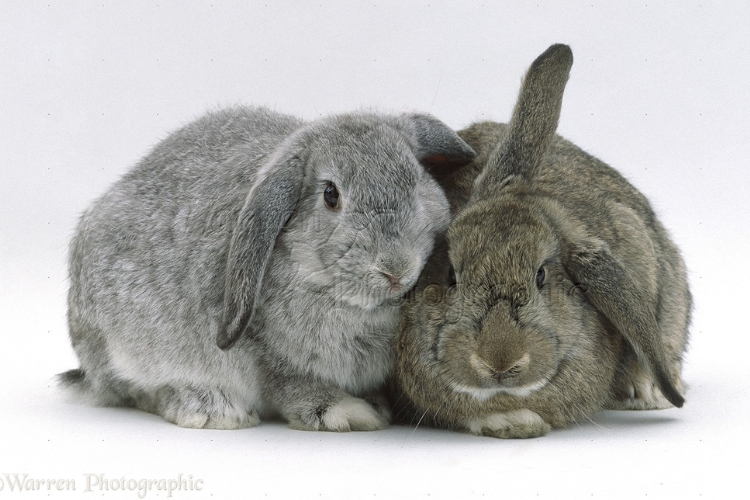
When it comes to Holland Lops, size can vary between the sexes. Females, or does, tend to be slightly larger than males, or bucks.
This difference is not only evident in their weight but also in their overall body structure. Does may exhibit a more robust build, which is particularly noticeable as they reach maturity.
Genetics play a crucial role in determining the size of an individual rabbit, regardless of sex. However, it’s common to observe that does have a more pronounced muscular development compared to bucks. This can be attributed to their biological role in reproduction, where a sturdier frame may provide advantages.
- Bucks: Typically weigh between 2-4 pounds
- Does: Generally weigh between 3-4.5 pounds
The table below summarizes the average weight range for Holland Lops by sex:
| Sex | Weight Range |
|---|---|
| Bucks | 2-4 pounds |
| Does | 3-4.5 pounds |
It’s important to monitor your Holland Lop’s growth and consult with a veterinarian if you notice any significant deviations from these averages. Healthy growth patterns are essential for the well-being of your pet.
Conclusion
In conclusion, the Holland Lop is a delightful breed that captures the hearts of rabbit enthusiasts with its compact size and charming appearance. As we’ve explored throughout this guide, understanding the growth chart of Holland Lops by age is crucial for proper care and to ensure they develop healthily.
From their adorable infancy to their full maturity, Holland Lops maintain a consistent allure, weighing between 3 and 4.5 pounds, with does generally larger than bucks. Their well-proportioned physique, including a rounded back, developed shoulders, and a balanced midsection, contributes to their popularity as family pets.
Whether you’re a seasoned rabbit owner or considering a Holland Lop as your first pet, this guide serves as a valuable resource for providing the best care for these mini masterpieces of rabbit design.
FAQs:
What is the average weight of a mature Holland Lop?
Holland Lops typically weigh between 3 and 4.5 pounds when they are fully mature.
How can I tell if my Holland Lop is overweight or underweight?
An overweight or underweight Holland Lop may have deviations in body shape from the ideal well-filled, balanced depth and width. Legs should be straight and short. It’s best to consult with a vet for an accurate assessment.
Are female Holland Lops larger than males?
Yes, the does (females) are generally bigger than the bucks (males) in Holland Lops.
When do Holland Lops reach full maturity?
Holland Lops typically reach full maturity around 6 months to 1 year of age.
What are the key physical characteristics of a Holland Lop?
Holland Lops have a compact body type with well-developed shoulders, hindquarters, and midsection. They have rounded backs, straight and short legs, and their ears are thick and upright, with a maximum length of 3.5 inches.
How does diet affect the growth of Holland Lops?
Diet plays a crucial role in the growth of Holland Lops. A balanced diet with the right nutrients is essential for healthy development and reaching their full growth potential.

